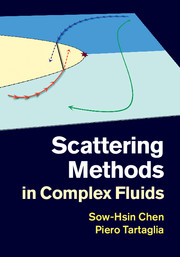Book contents
- Frontmatter
- Contents
- List of illustrations
- Preface
- Part I Scattering and liquids
- Part II Structural arrest
- Part III Water
- 7 Dynamic crossover phenomena in confined water
- 8 Dynamic crossover phenomena in other glass-forming liquids
- 9 Inelastic neutron scattering in water
- 10 Introduction to high-resolution inelastic X-ray scattering spectroscopy
- References
- Index
10 - Introduction to high-resolution inelastic X-ray scattering spectroscopy
from Part III - Water
Published online by Cambridge University Press: 05 May 2015
- Frontmatter
- Contents
- List of illustrations
- Preface
- Part I Scattering and liquids
- Part II Structural arrest
- Part III Water
- 7 Dynamic crossover phenomena in confined water
- 8 Dynamic crossover phenomena in other glass-forming liquids
- 9 Inelastic neutron scattering in water
- 10 Introduction to high-resolution inelastic X-ray scattering spectroscopy
- References
- Index
Summary
Comparison of inelastic neutron scattering and inelastic X-ray scattering techniques
10.1.1 Complementarity of inelastic neutron scattering and inelastic X-ray scattering spectroscopies
The study of atomic and molecular density fluctuations in condensed systems on the length scale of inter-particle separation is, traditionally, the domain of inelastic neutron scattering spectroscopy. The principal reason for which neutrons are particularly suitable for these studies is the very good matching between the kinematic phase space covered by thermal and cold neutron scatterings and that of phononlike collective excitations in the condensed matter systems and bio-molecular assemblies. In fact, the energy of neutrons with wavelengths of the order of interparticle distances of say 3 Å in liquids and solids is about 9 meV. This energy is comparable to the energies of typical phonons in condensed matter with wavelengths in the nanometre range. As a consequence, one can determine the peak position in the measured dynamic structure factor S (Q, E) without requiring an excessive energy resolution of the inelastic neutron spectrometers used. Thus one is able to utilise the neutron flux from a typical thermal and cold neutron source rather effectively.
In principle, X-rays can also be used to measure the dynamic structure factor S(Q, E) of the systems studied. The inelastic X-ray scattering cross-section, under the prevailing circumstances, has an expression very similar to that for neutrons, and the coupling of X-rays and neutrons to the density fluctuations in the material system is of the same order of magnitude. The X-ray scattering cross-section is derived by considering the interaction between the atomic electrons and the electromagnetic field associated with the X-rays in the Hamiltonian. In the nonrelativistic limit, the interaction Hamiltonian is composed of two terms. They are the Thomson term and the photoelectric absorption term, which is the coupling of the photon field to the electron current.
- Type
- Chapter
- Information
- Scattering Methods in Complex Fluids , pp. 309 - 358Publisher: Cambridge University PressPrint publication year: 2015

